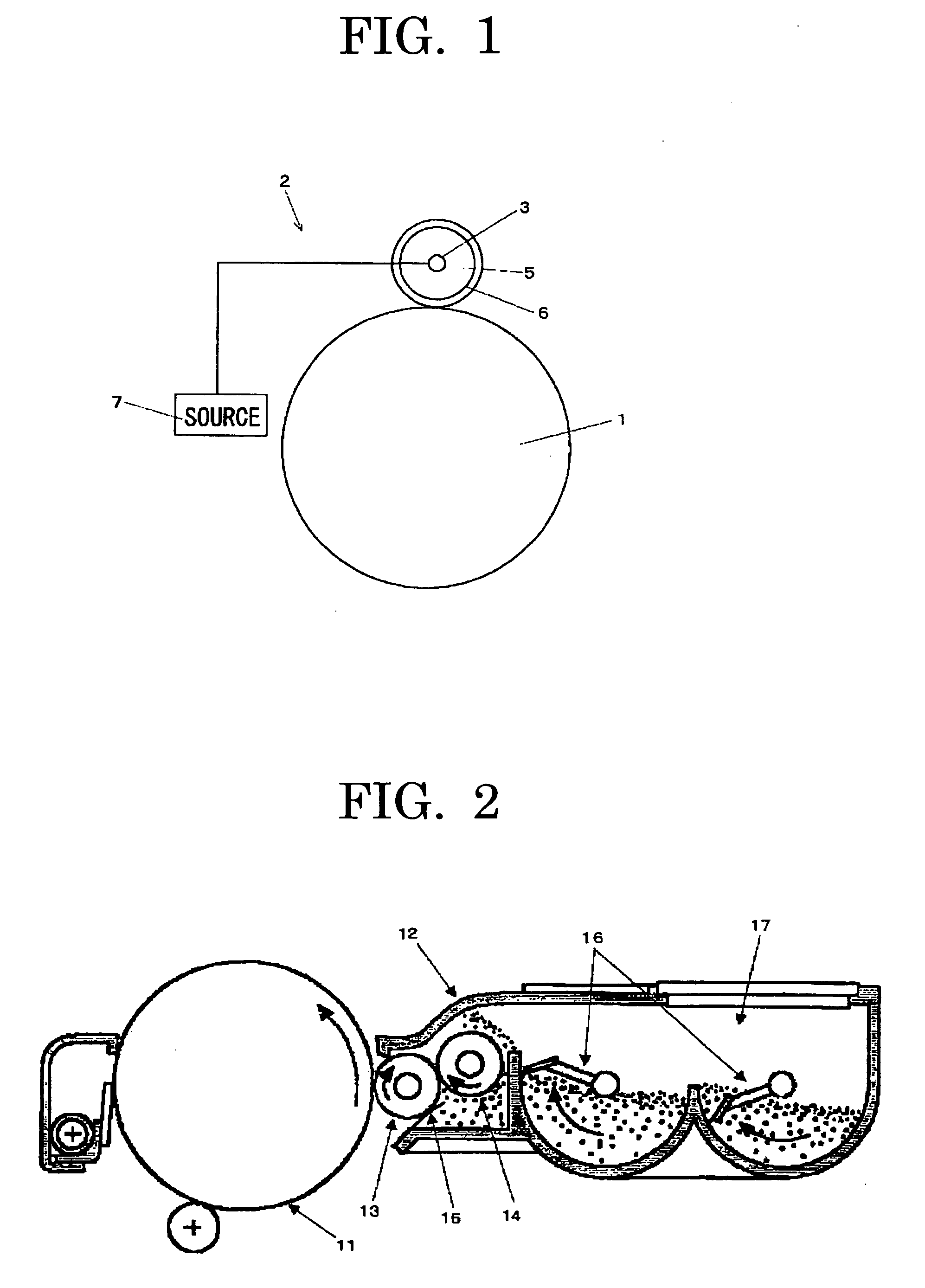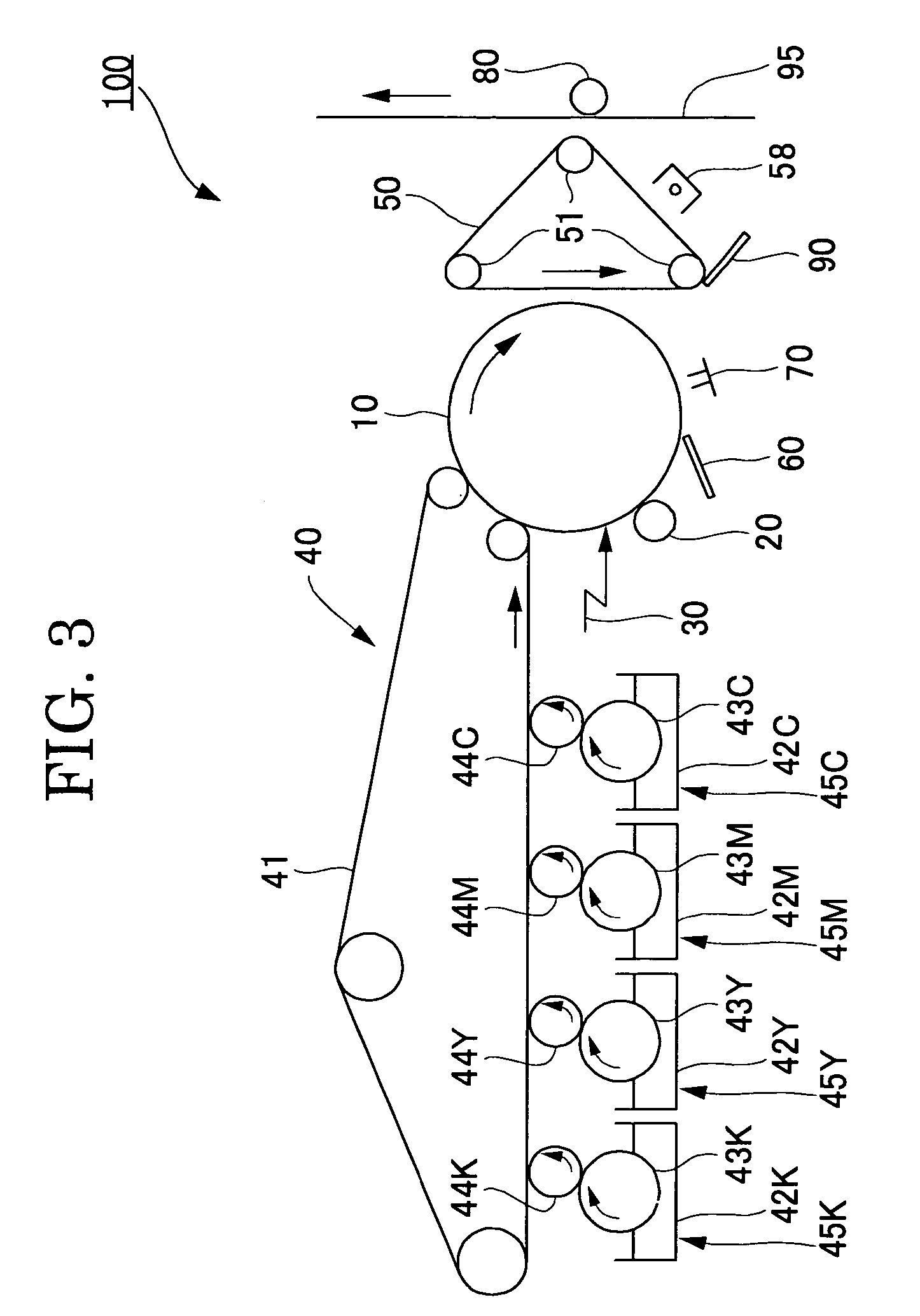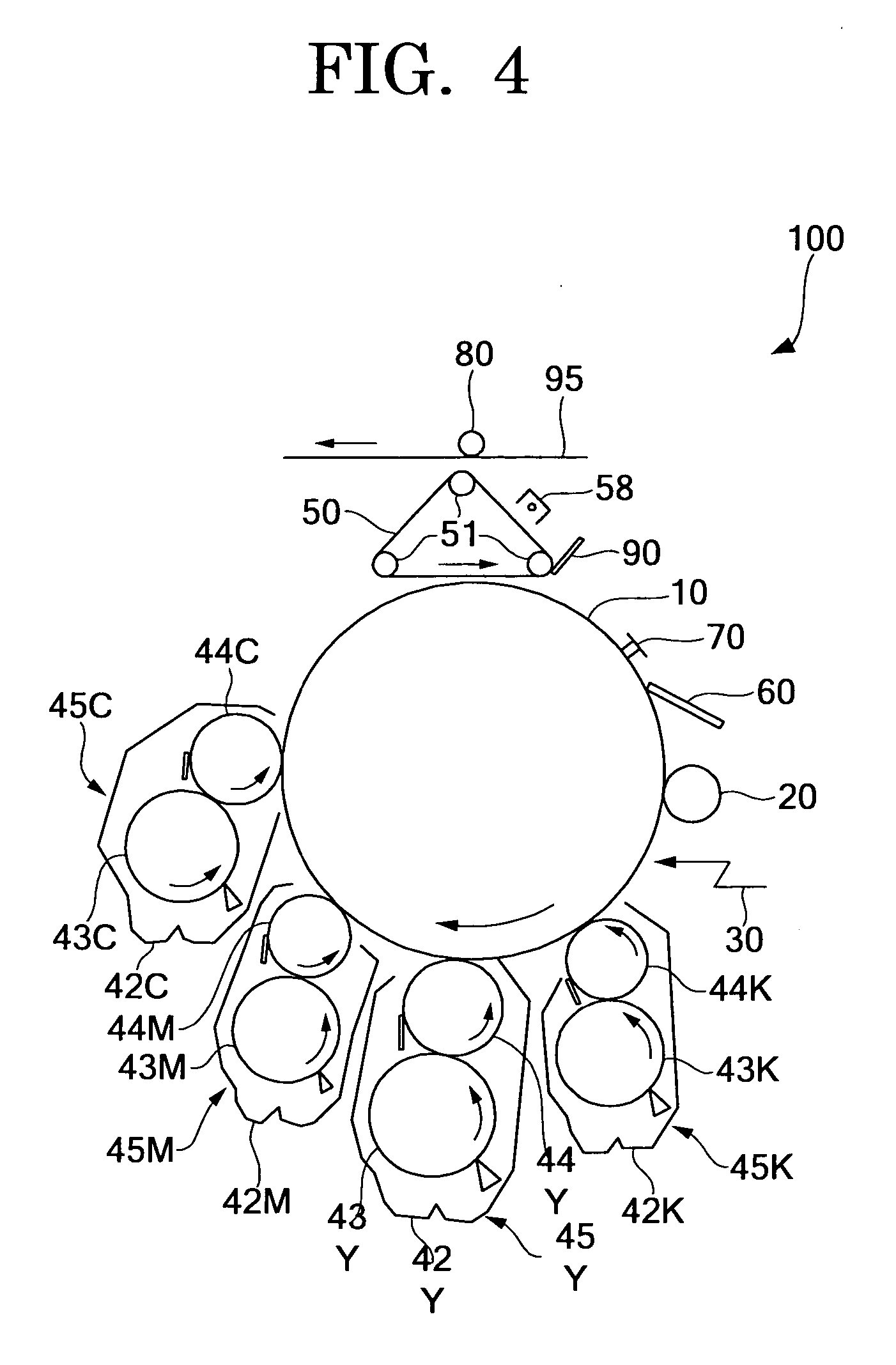Toner for electrostatic development, developer, image forming method, image-forming apparatus and process for cartridge using the same
a technology for electrostatic development and image forming, which is applied in the direction of electrographic process, electrographic process using charge pattern, instruments, etc., can solve the problems of constant quality of images, maintenance and size reduction of apparatus, and difficult to obtain, so as to achieve effective and uniform operation, excellent image stability, and the effect of not deteriorating the operating life of the photoconductors
- Summary
- Abstract
- Description
- Claims
- Application Information
AI Technical Summary
Benefits of technology
Problems solved by technology
Method used
Image
Examples
example 1
[0219] 0.4 parts by mass of inorganic oxide, forsterite (first inorganic fine particle) as shown in Table 1 and 1 part by mass of Silica RX200 (second inorganic fine particle) were added to 100 parts by mass of colored resin particle A and mixed by means of a Henschel mixer at a peripheral velocity of 40 m / sec. for 60 seconds to obtain a magenta toner 1.
[0220] 2,000 sheets of a specific print pattern at a printing ratio of 6% were repeatedly copied under N / N environment (23° C., 45%), using the above magenta toner as single component developer and an image forming apparatus (IPSiO CX2500 manufactured by Ricoh Company, Ltd.). The condition of developing roller in the development apparatus, copied image and filming and scratch on the photoconductor were visually observed and evaluated. The results are shown in FIG. 1.
[0221] The evaluation standard is as follow. [0222] A: good [0223] B: poses no problem for practical use [0224] C: no good for practical use
example 10
[0227] 1.5 parts by mass of inorganic oxide 1, forsterite (first inorganic fine particle) as shown in Table 3 and an external additive 1 as shown in Table 3 were added to 100 parts by mass of the toner particle B and mixed by means of a Henschel mixer at a peripheral velocity of 40 m / sec. for 60 seconds to obtain a toner of Example 10.
[0228] The above toner was mixed with the carrier and set in a full-color copier (PRETER550 manufactured by Ricoh Company, Ltd.) as two-component developer. 200,000 sheets of a color image (5% printing image) were repeatedly printed under low-temperature, low-humidity environment (temperature of 10° C. and relative humidity of 15%) and high-temperature, high-humidity environment (temperature of 30° C. and relative humidity of 80%) on a mode which pauses for 30 minutes every 1,000 sheets of repeated printing and the following evaluations were conducted.
[0229] The evaluation results are shown in Table 3.
[0230] The evaluation standard in Table 3 is as ...
PUM
| Property | Measurement | Unit |
|---|---|---|
| volume resistivity | aaaaa | aaaaa |
| relative permittivity | aaaaa | aaaaa |
| primary particle diameter | aaaaa | aaaaa |
Abstract
Description
Claims
Application Information
 Login to View More
Login to View More - R&D
- Intellectual Property
- Life Sciences
- Materials
- Tech Scout
- Unparalleled Data Quality
- Higher Quality Content
- 60% Fewer Hallucinations
Browse by: Latest US Patents, China's latest patents, Technical Efficacy Thesaurus, Application Domain, Technology Topic, Popular Technical Reports.
© 2025 PatSnap. All rights reserved.Legal|Privacy policy|Modern Slavery Act Transparency Statement|Sitemap|About US| Contact US: help@patsnap.com



